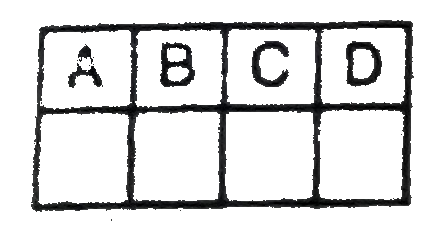The formation of 1, 2 dibromoethane from ethene and bromine is an example of:
A Substitution B Dehydration C Dehydrohalogenation D Addition
To determine the type of reaction that occurs during the formation of 1,2-dibromoethane from ethene and bromine, we can analyze the process step by step.
1. Identify the Reactants and Products:
- The reactant is ethene (C2H4), which has a double bond between the two carbon atoms.
- The product is 1,2-dibromoethane (C2H4Br2), where two bromine atoms are added to the ethene.
2. Understand the Reaction Mechanism:
- Ethene has a double bond (C=C). When it reacts with bromine (Br2), the double bond breaks.
- This breaking of the double bond allows the bromine atoms to attach to the carbon atoms.
3. Visualize the Reaction:
- The double bond in ethene (C=C) breaks, and each carbon atom forms a new bond with a bromine atom.
- This results in the formation of 1,2-dibromoethane, where each carbon atom is now bonded to a bromine atom.
4. Classify the Reaction:
- The reaction involves the addition of bromine across the double bond of ethene.
- Since we are adding atoms (bromine) to the molecule without removing any other atoms, this is classified as an addition reaction.
5. Conclusion:
- Therefore, the formation of 1,2-dibromoethane from ethene and bromine is an example of an Addition Reaction.
Final Answer:
The correct answer is D. Addition.
---
- The reactant is ethene (C2H4), which has a double bond between the two carbon atoms.
- The product is 1,2-dibromoethane (C2H4Br2), where two bromine atoms are added to the ethene.
- Ethene has a double bond (C=C). When it reacts with bromine (Br2), the double bond breaks.
- This breaking of the double bond allows the bromine atoms to attach to the carbon atoms.
- The double bond in ethene (C=C) breaks, and each carbon atom forms a new bond with a bromine atom.
- This results in the formation of 1,2-dibromoethane, where each carbon atom is now bonded to a bromine atom.
- The reaction involves the addition of bromine across the double bond of ethene.
- Since we are adding atoms (bromine) to the molecule without removing any other atoms, this is classified as an addition reaction.
- Therefore, the formation of 1,2-dibromoethane from ethene and bromine is an example of an Addition Reaction.
The correct answer is D. Addition.
Similar Questions
Knowledge Check
The formation of cyanohydrin from a ketone is an example of
nucleophilic substitution
electrophilic substitution
electrophilic addition
nucleophilic addition.Anucleophilic substitutionBelectrophilic substitutionCelectrophilic additionDnucleophilic addition.
Fill in the blank with the choices given in brackets :
Conversion of ethanol to ethene by the action of concentrated sulphuric acid is an example of ………………….. (dehydration/dehydrogenation/ dehydrohalogenation)
View SolutionFill in the blank with the choices given in brackets:
i] Conversion of ethanol to ethene' by the action of conc. sulphuric acid is an example of______ [dehydration/dehydrogenation/dehydrohalogenation]
ii) Substitution reactions are characteristic reactions _______.[alkynes/alkenes/alkanes]
View SolutionFormation of ethanol from ethene is called_____(hydration/dehydration).
View SolutionEthanol can be converted to ethene which can then be changed to ethane.
Choose the correct word or phrase from the brackets to complete the following sentences:
The conversion of ethanol to ethene is an example of ______(dehydration / dehydrogenation)
View Solution(a) Give the mechanism for the formation of ethanol from ethene.
(b) Predict the reagent for carrying out the following conversions:
(i) Phenol to benzoquinone
(ii) Anisole to p-bromoanisole
(iii) Phenol to 2,4.6-tribromophenol
View SolutionExplain the given reactions with the examples.
(a) Hydrogenation reaction , (b) Oxidation reaction
(c ) Substitution reaction , (d) Saponification reaction
(e) Combustion reaction
View Solution
Assign the number 1,2,3,4 for the formation of products A,B,C,D in appropriate box as per the given instruction .
If aliphatic nucleophilic substitution reaction then assign = 3
If aromatic nucleophilic substitution reaction then assign =4
If esterification reaction then assign = 1
if dehydration reaction then assign=2

View Solution
